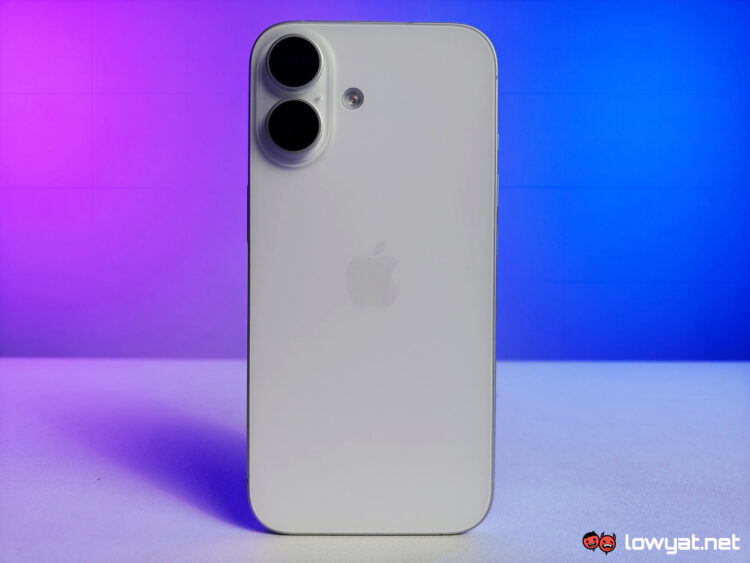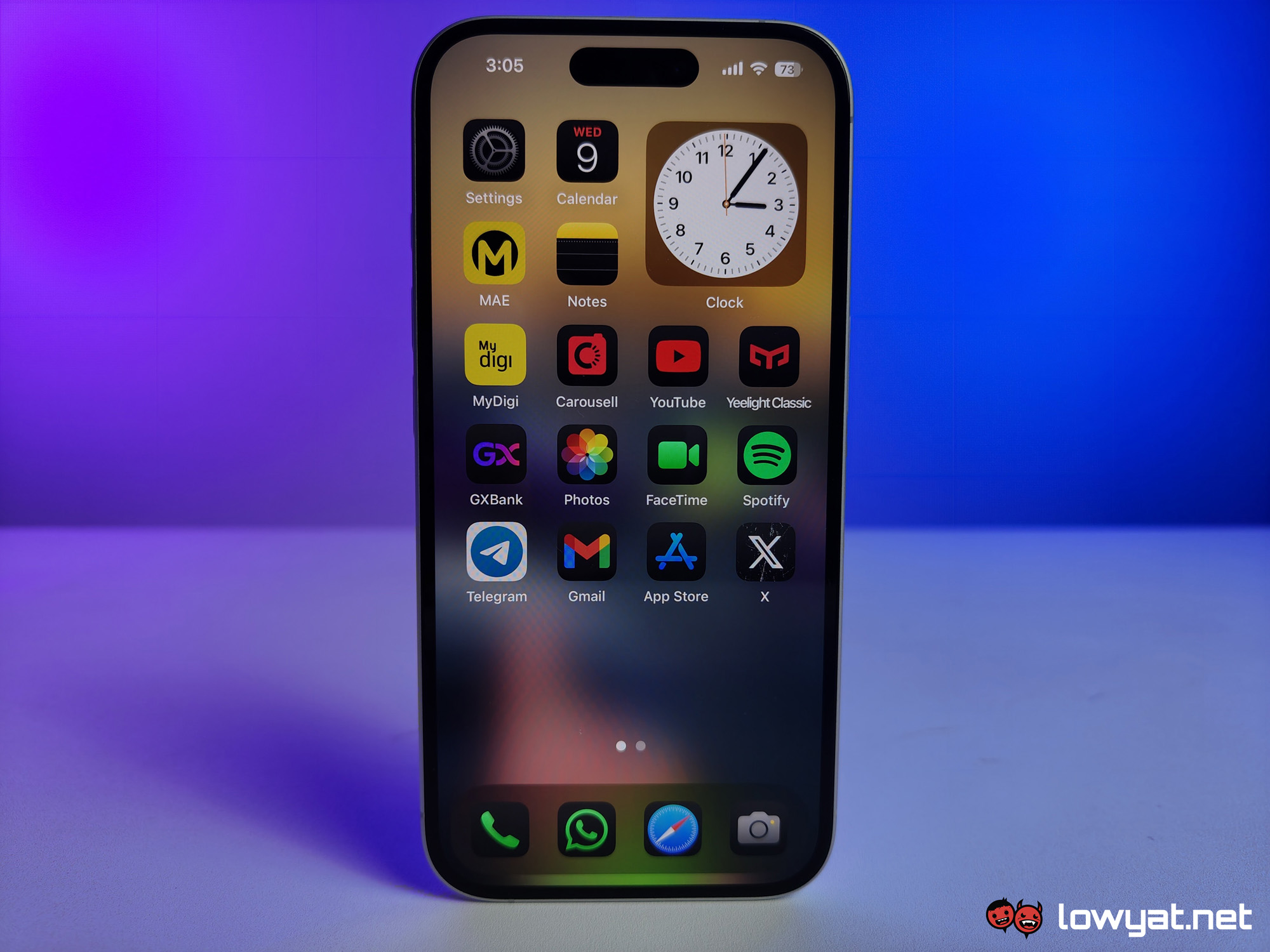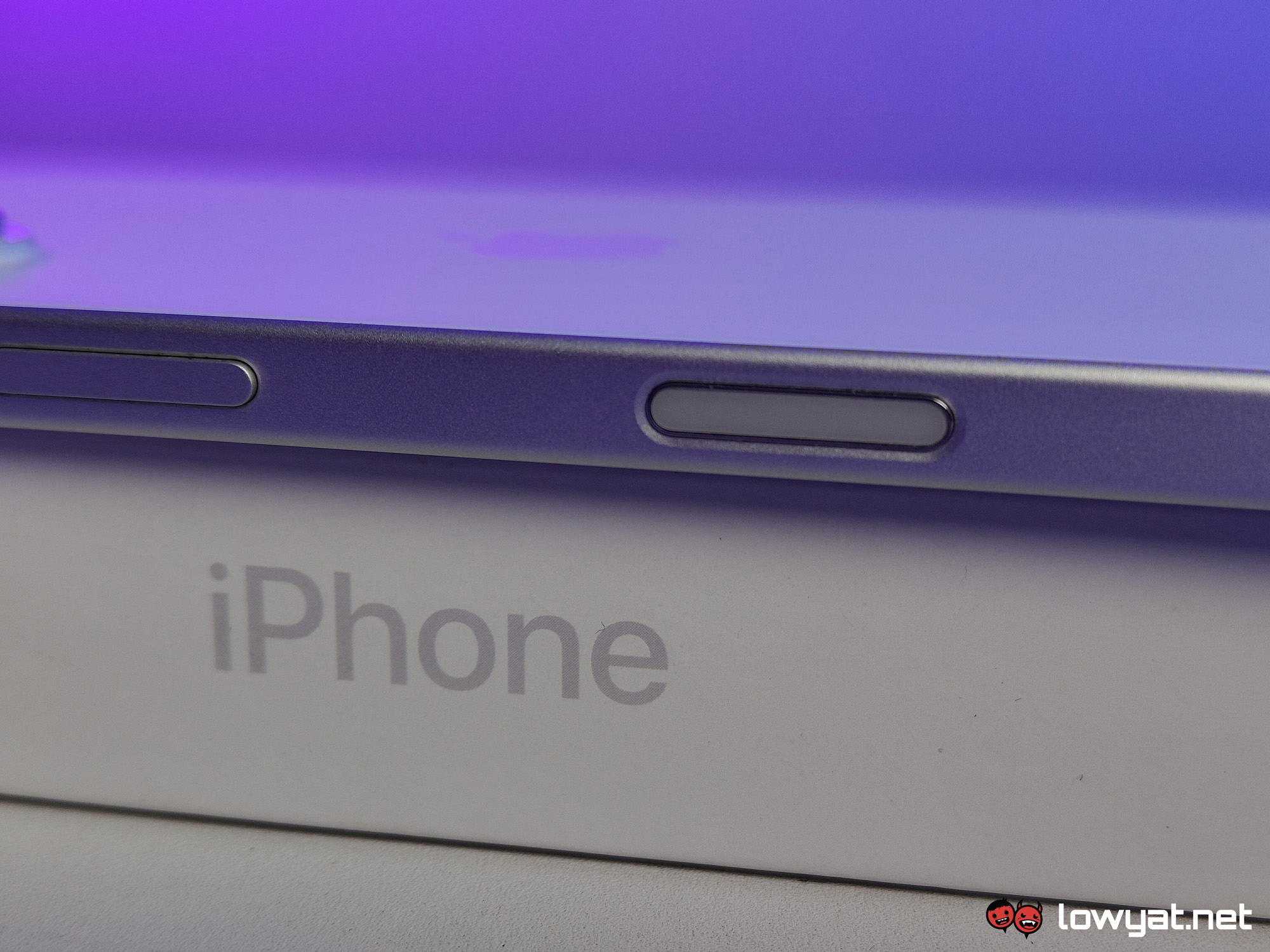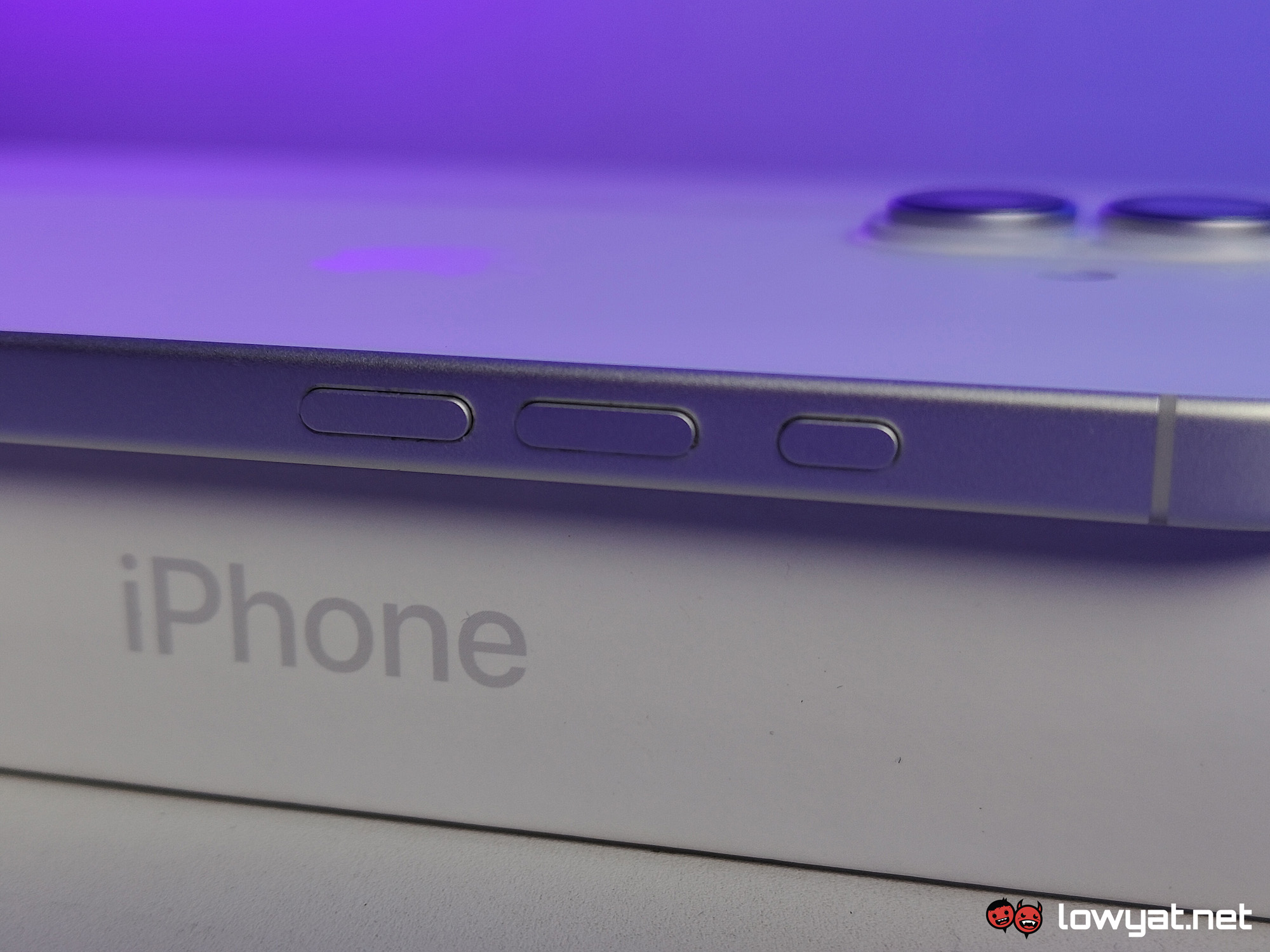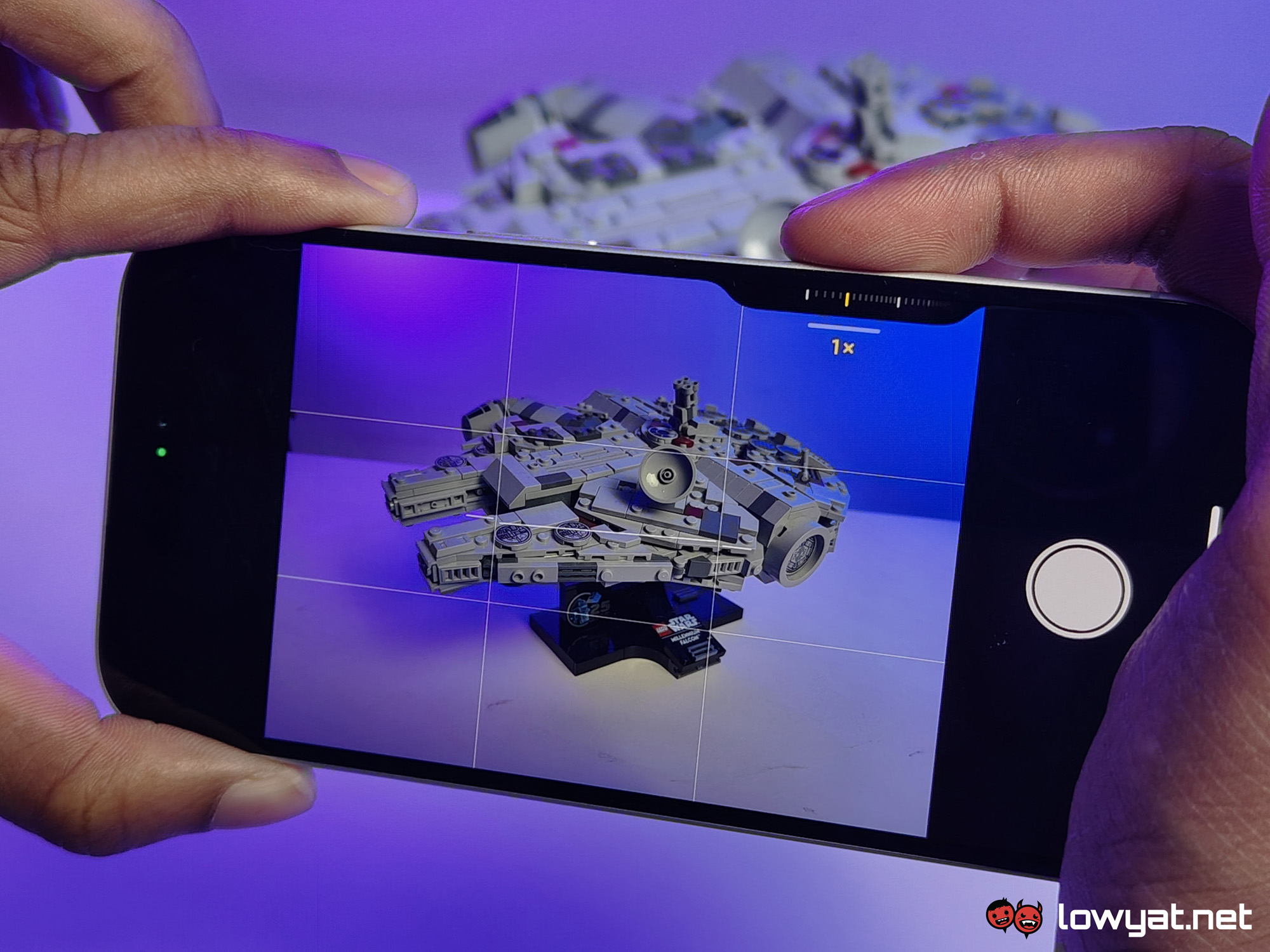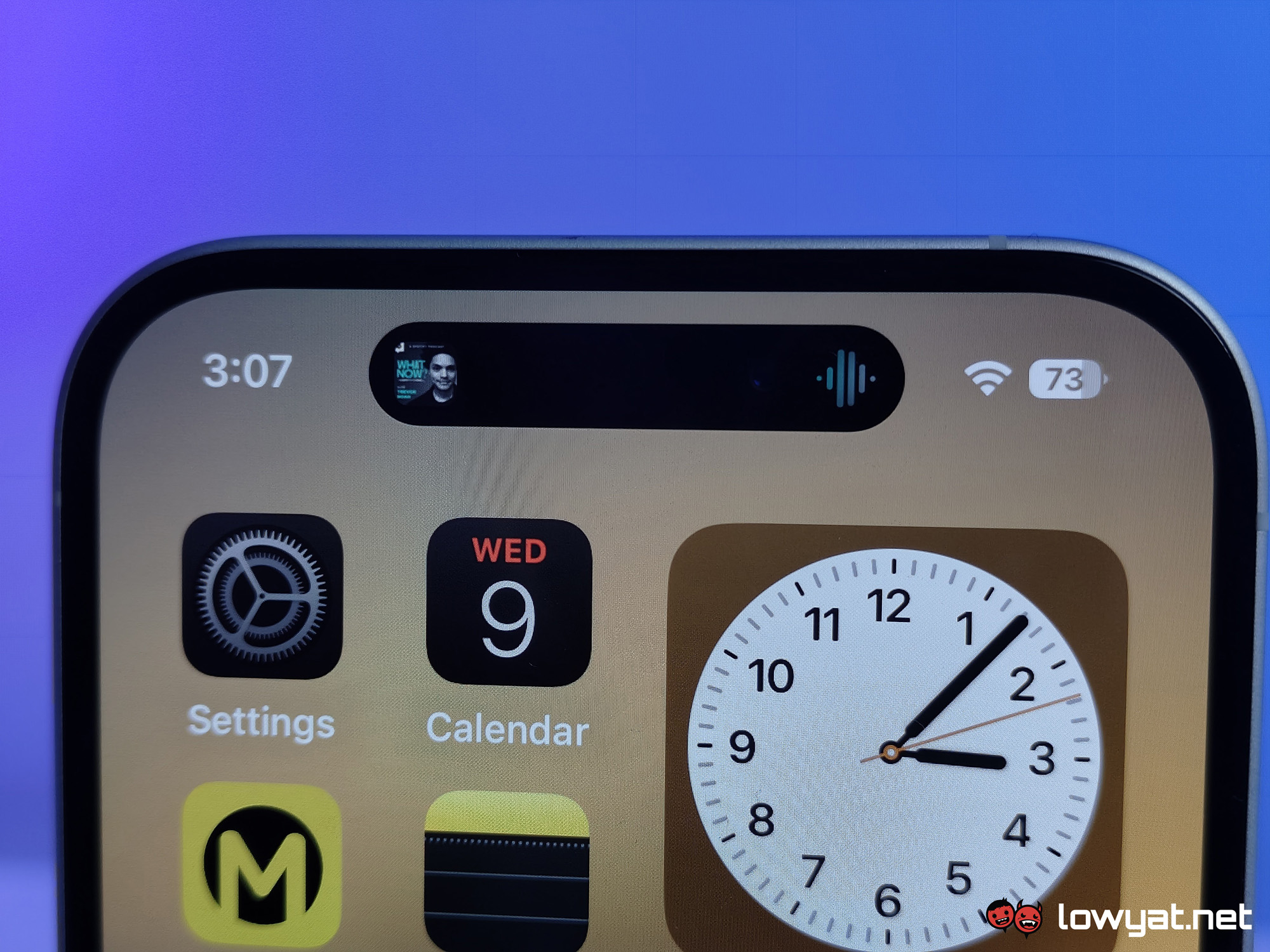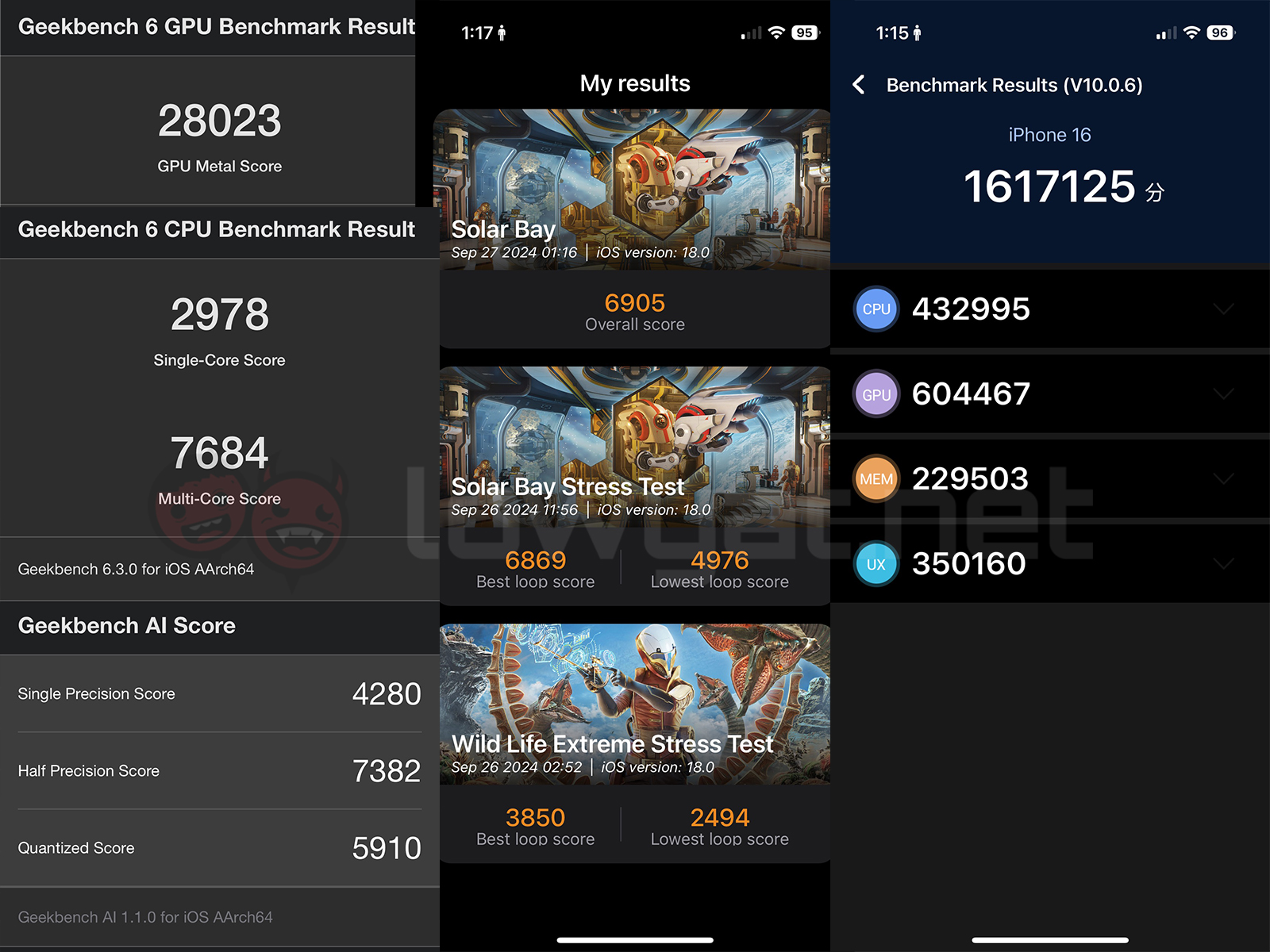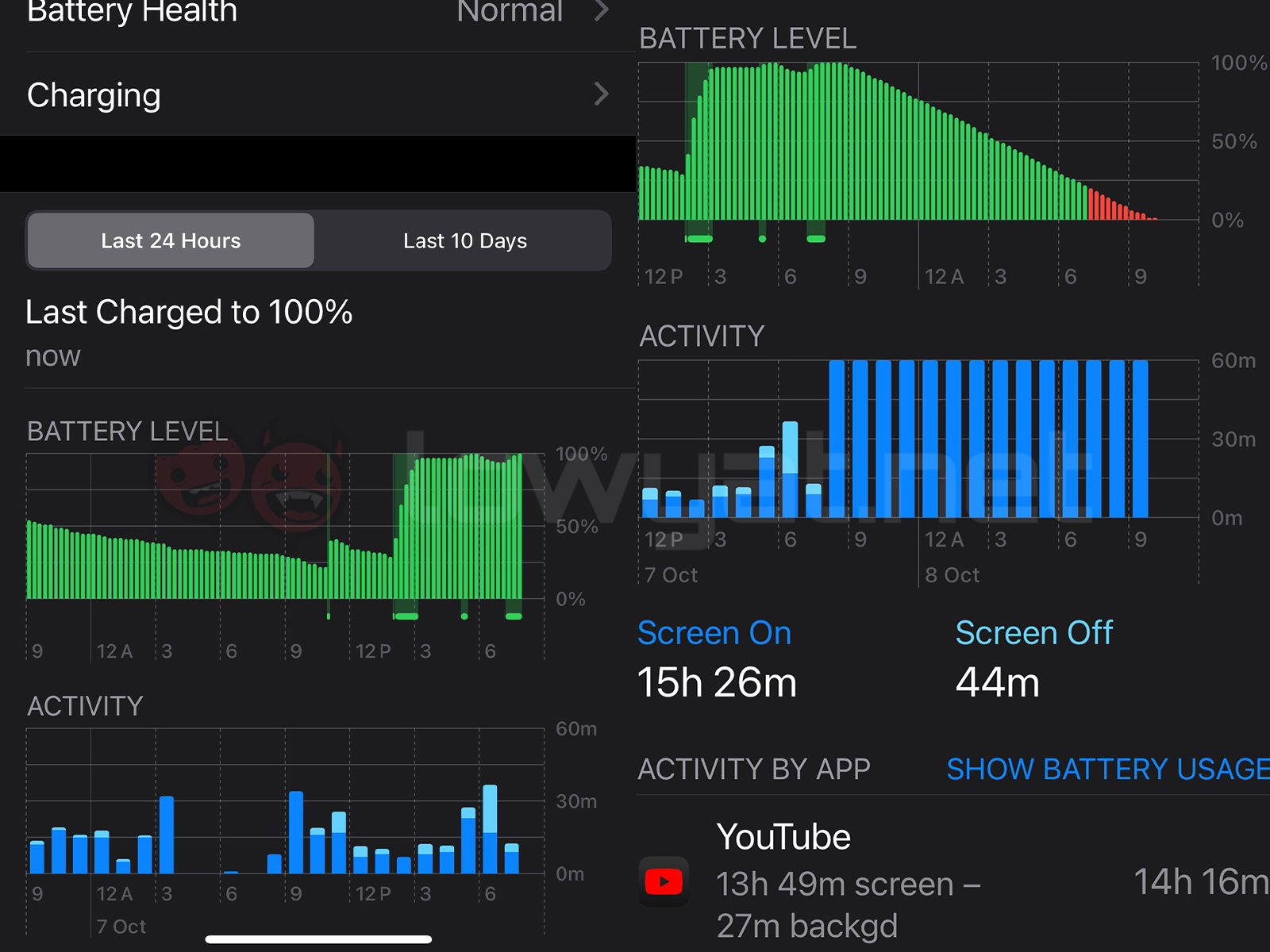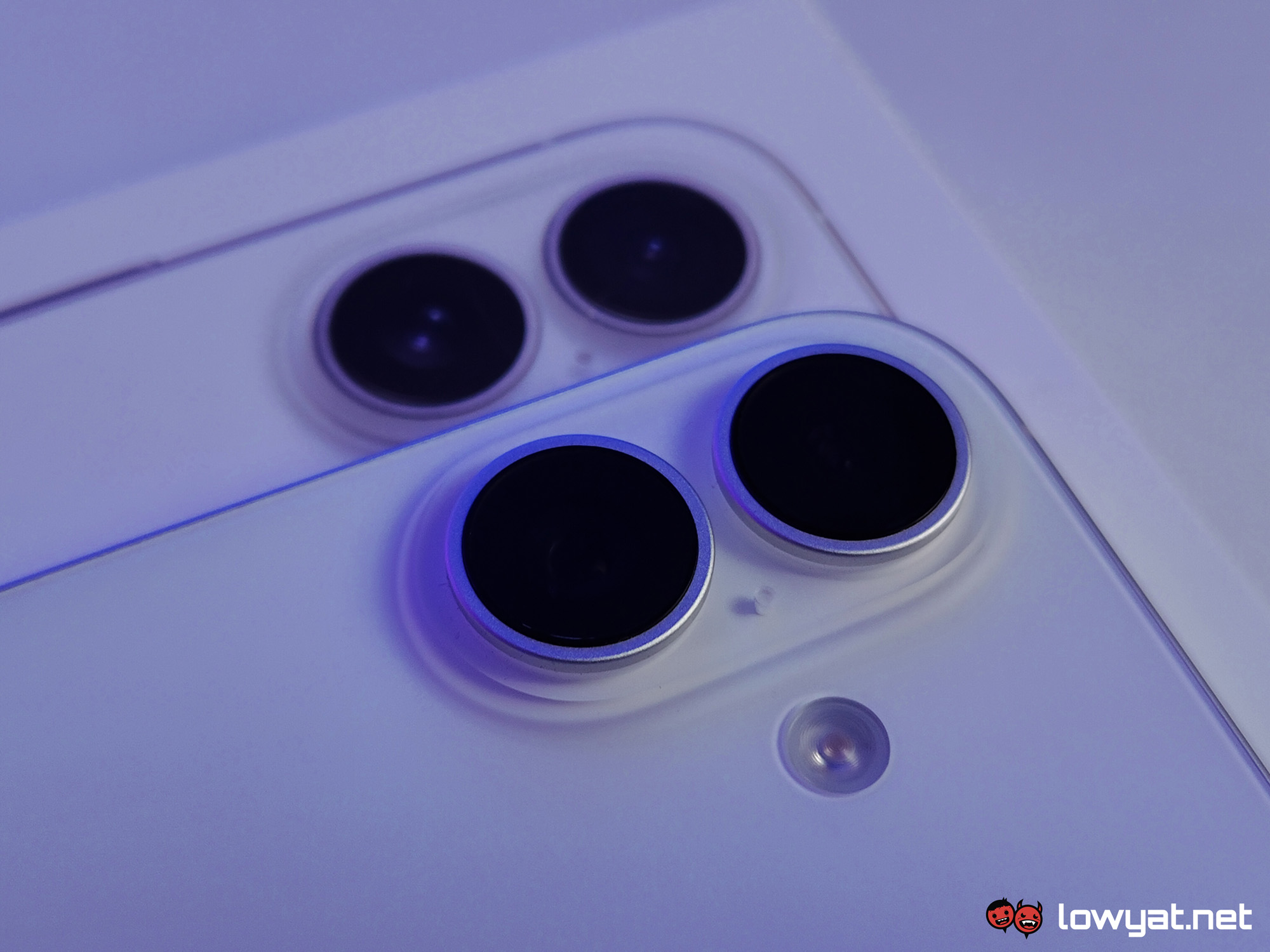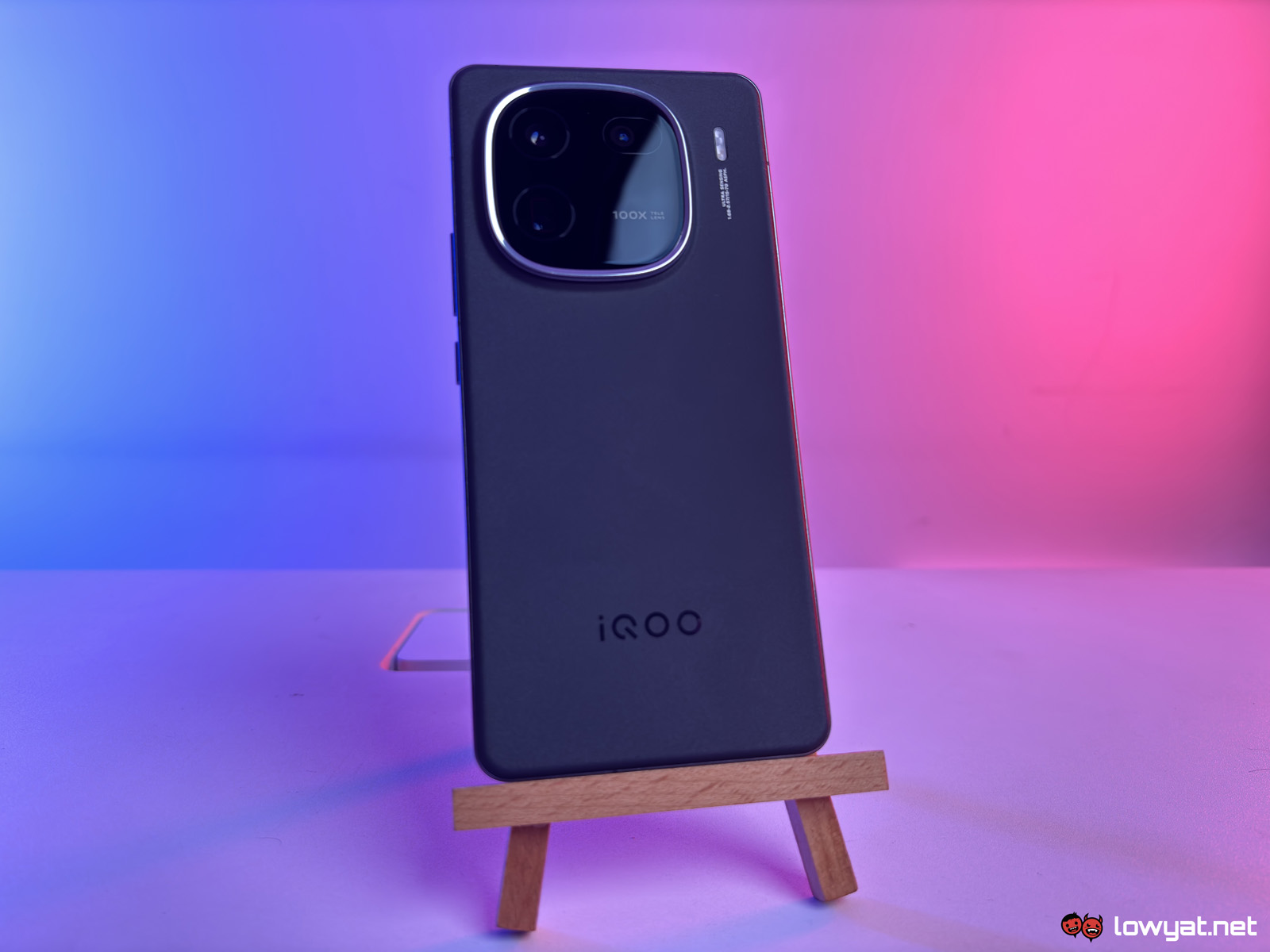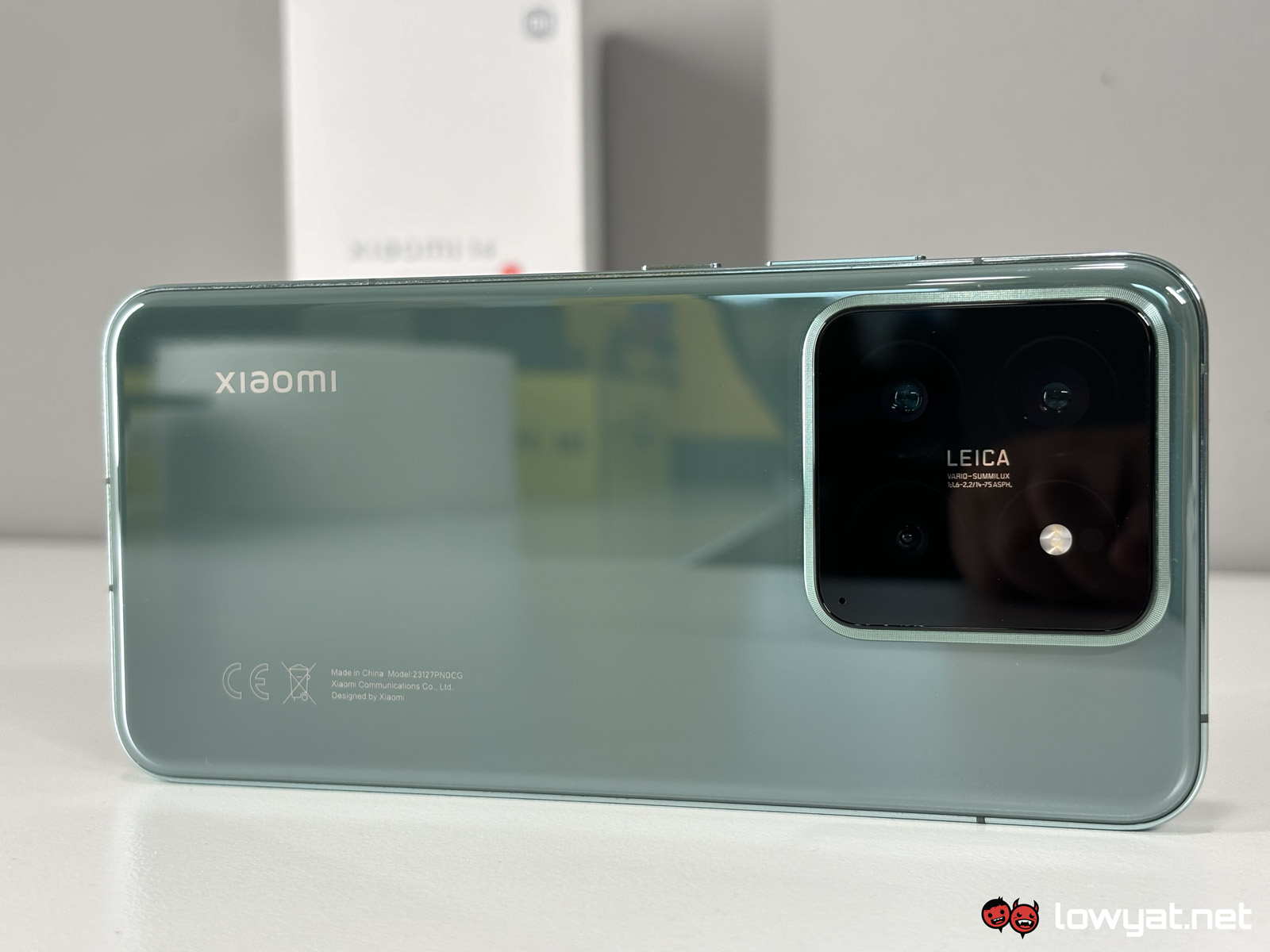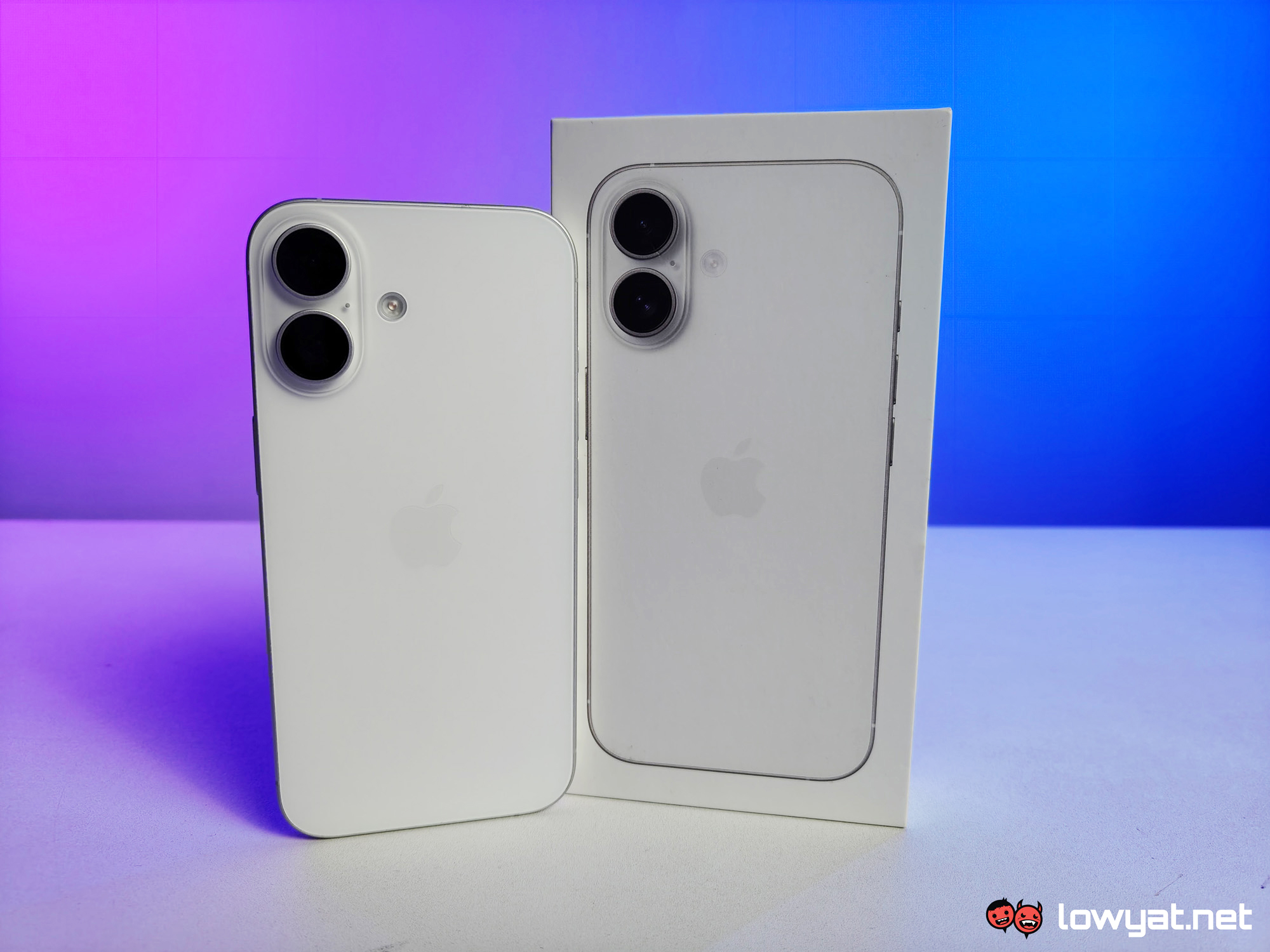Another year, another incremental update for the iPhone. Apple’s new iPhone 16 has a nearly identical design to the iPhone 15, save for the camera alignment, and just like its predecessor, some features that were previously exclusive to the Pro series has made it onto the vanilla lineup.
But as you’re probably already familiar with, the tech giant took it a step further and added an extra button for this year’s entire lineup, along with a brand new chipset for the non-Pro models. This breaks the pattern from Apple’s previous cycles, but is it enough for people to justify an upgrade?
Specifications
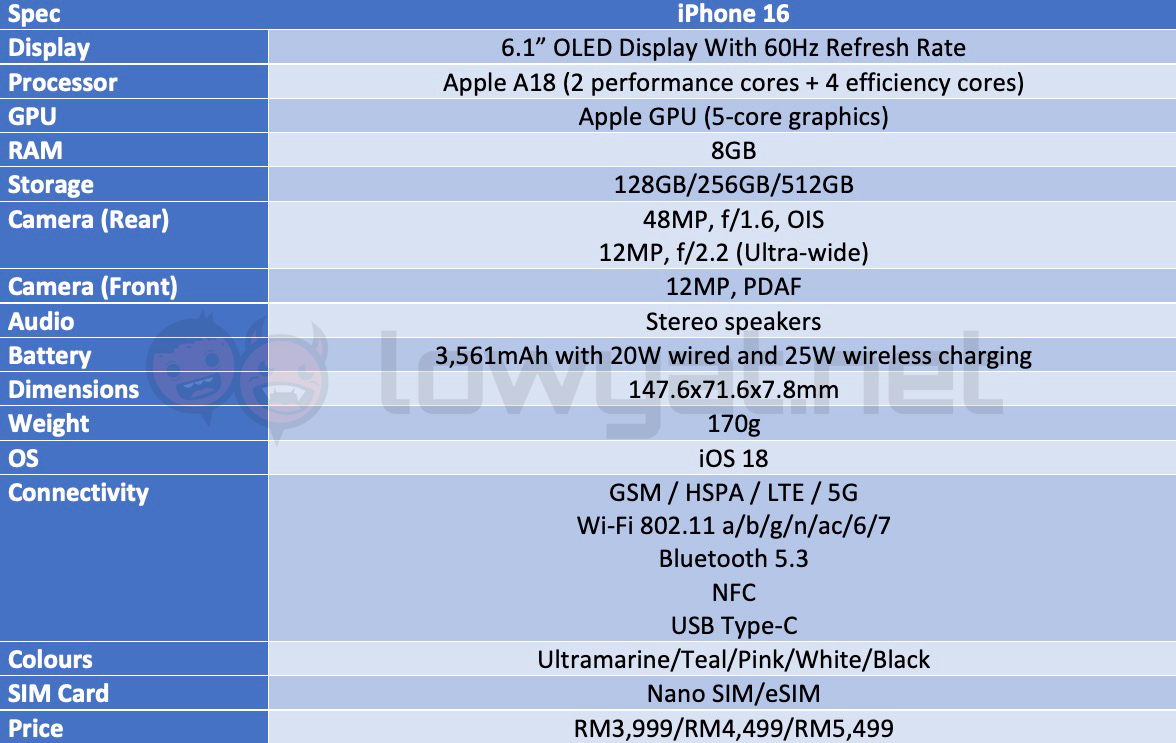 The iPhone 16 gets the same 6.1-inch 1179×2556 OLED display with a peak brightness of 2,000 nits and, unfortunately, a 60Hz refresh rate. For durability, the screen is equipped with Ceramic Shield glass while the phone itself comes with an IP68 rating for dust and water resistance.
The iPhone 16 gets the same 6.1-inch 1179×2556 OLED display with a peak brightness of 2,000 nits and, unfortunately, a 60Hz refresh rate. For durability, the screen is equipped with Ceramic Shield glass while the phone itself comes with an IP68 rating for dust and water resistance.
Under the hood, it gets a major upgrade to the new Apple A18 chipset paired with 8GB of RAM and up to 512GB of storage. On the optics front, it has brings over the same 48MP main camera with OIS and a slightly improved 12MP ultra-wide lens, as well as a 12MP selfie snapper with autofocus hidden inside the Dynamic Island pill.
While Apple does not publicly disclose the battery capacity for its phones, documents from regulators have revealed that the 16 is backed by a nominally larger 3,561mAh cell with support for 20W wired charging and an improved wireless charging speed of 25W. However, the latter can only be achieved when using a MagSafe charger, while Qi2 and Qi chargers are limited to 15W and 7.5W respectively.
Looks & Functionality
As I’ve previously noted in my hands on, the iPhone 16 gets essentially the same design and dimensions as the 15, with the exception of the camera arrangement and the finish on the back — the 16 Pro series actually got bigger this year. It comes with the same flat screen with uniform bezels along with flat rails that have slightly curved edges so it’s more comfortable to hold.
The backplate now uses something that looks and feels like frosted glass, which not only gives users a good grip, but it’s also fingerprint-resistant unlike its predecessor. The camera module has shift from a diagonal arrangement inside a square glass island to a vertical alignment inside a smaller pill-shaped island. Aside from just being an updated look, the vertical alignment allows gives the new phone the ability to record spatial photos and videos, although there’s not much use for this unless you have the Vision Pro headset.
Display-wise, it disappointingly retains a 60Hz OLED display with the same peak brightness ratings — it’s still one of the brightest displays out there when it comes to global brightness — but it does also come with a lower minimum brightness of 1 nit, down from 2 nits. This might not seem like a big difference, but I can tell you from experience that the screen can get so dim that even in a pitch dark room, I’ve had to turn up the brightness half the time, meaning that it’s a positive addition for night-time doom-scrollers.
The vanilla iPhone gets two new buttons this year, namely the Action Button from last year’s Pro models as well as the new Camera Control. This time around, the entire lineup comes with the latter. While the Action Button does add some welcome customisability, it’s unfortunately limited to a single function as users are unable to add a secondary function via a double click. There is a convoluted workout to this, but I don’t see why Apple wouldn’t be able to add this feature into the settings.
As for Camera Control, it acts as a shutter button, a camera shortcut, and a touch-sensitive slider for various functions such as exposure, depth, zoom, lenses, styles, and tone. To tell you the truth, I had high hopes for this new tool to be a part of my daily usage of the iPhone 16, but alas, practicality got in the way.
For one thing, its positioning is a bit awkward for one-handed use, whether you’re using it in portrait or landscape orientations. An even when you’re holding the phone with two hands in landscape mode, there’s the matter of speed. To switch between functions, you have to swipe down on the screen using your fingers, meaning it’s a lot faster and more efficient to just change most of those settings through the touchscreen, such as with switching lenses and zooming in and out.
Speaking of which, Camera Control seems to have a bit of a sensitivity issue, at least for me. Whenever I have it set to zoom, I have to consciously put on just a little bit of force in order for it to register my swipes. This isn’t a major flaw on its own, but again, it does feel more natural to just zoom using your fingers. In my weeks of using the iPhone 16, I basically stopped using the Camera Control as anything more than a camera shortcut trigger after a few days.
On the software side, iOS 18 does come with a lot more customisation but the pièce de résistance, Apple Intelligence, won’t be coming until later this month. And, on a personal note, I’m irked that they still haven’t offered users the option to switch the single-tap and long-press functionalities of the Dynamic Island.
Performance & Battery
The chipset is probably the most significant leap found in the iPhone 16, skipping a whole generation from the A16 to the A18. Of course, the results speak for themselves as it achieved a difference of more than a thousand points over its predecessor on the 3DMark Wild Life Extreme Stress Test, and an advantage of over 200,000 points on Antutu.
While the 15 was by no means a slouch, the A16 somehow feels even smoother and faster than before. Moreover, for those who are avid mobile gamers, the AAA games that were previously exclusive to the 15 Pro series, such Assassin’s Creed Mirage and Resident Evil 4 Remake, are now available for the entire iPhone 16 lineup.
The battery life on the 16 isn’t what I was expecting, in the best way possible. Apple is known for putting small batteries into its phones, with capacities well below the industry average. While I was predicting that the 16 would give me battery anxiety, it can shockingly last the entire day and then some. Mind you, it can’t last two whole days unlike some Android flagships, but I would regularly go to bed with around 30% left.
Oddly enough, the YouTube streaming endurance test gave a conflicting result. It lasted only 14 hours, which is one of the worst times I’ve ever measured with this test on a flagship phone. Charging-wise, it gets the same wired charging speed, but if you happen to own a MagSafe charger and are also willing to get Apple’s new 30W charging brick, then you can achieve 25W wireless charging.
Camera
The camera setup of the iPhone 16 doesn’t get any noticeable upgrades this year, with the same 48MP primary sensor that crops in to 12MP for 2x zoom and a 12MP ultra-wide lens with a lower aperture of f/2.2, which is supposed to yield brighter photos.
Given that it borrows the 15’s camera, it’s no surprise that daytime shots are reliably vibrant with a good amount of dynamic range. It’s not as sharp or as vivid as some flagship phone cameras, leading to the iPhone’s famous “natural-looking” pictures, but it has an incredibly fast autofocus and shutter, making it a well-rounded choice.
As my colleague pointed out to me, however, it does occasionally have trouble focusing on the background when there’s a close object in the foreground, even when you manually tap to focus. Though I didn’t really encounter real-life situations where this would be an issue, prospective buyers should still take note.
This leads me to my biggest complaint for the iPhone 16, which is the software’s strong proclivity towards automatically switching to macro mode for close-up shots. Obviously, macro mode is good for when you want to snap a picture of something small, like a flower, for instance. But when I just want to take a close-up of my cat, it will switch to macro mode even if the regular camera is perfectly capable of getting the object in focus.
You can manually switch it to the main lens after it turns on macro mode, but it can get fairly annoying. The macro mode uses the ultra-wide lens, which, while mildly improved, is still not the best option for most shots, as with the majority of smartphones.
Camera Samples
Competition
iPhone 15
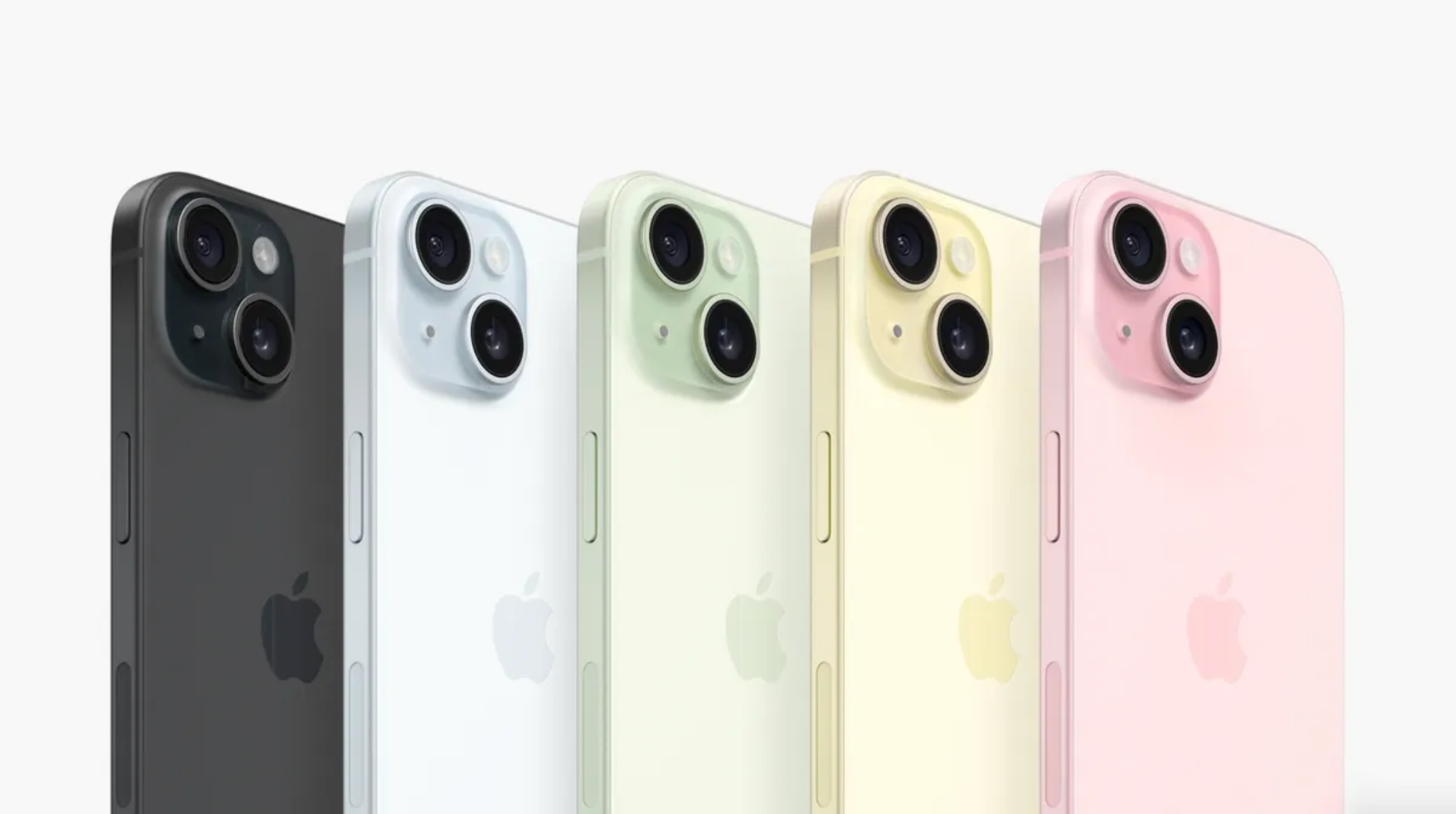
While the iPhone 16 is an objectively better smartphone than the iPhone 15, they are nearly identical in design and specs, with the only exceptions being the two new buttons and a more powerful chipset. If you don’t care much about the buttons and you have no interest in playing AAA mobile games, then you’re not losing out on much by buying the predecessor at RM3,499, saving you RM500.
However, it should be noted that the higher-end A18 chip could give you a few more years of use, so you might want to take that into consideration.
iQOO 12
The most pocket-friendly flagship smartphone you can find is the iQOO 12, which sports a 6.78-inch 2.8K AMOLED display with a 144Hz refresh rate and a global peak brightness of 1,400 nits. At only RM3,399, it gives you a Qualcomm Snapdragon 8 Gen 3 with 16GB RAM and 512GB of storage.
Camera-wise, it offers a 50MP main camera with OIS, a 50MP ultra-wide lens, a 64MP periscope lens with 3x optical zoom, and a 16MP front sensor. Powering it is a 5,000mAh battery with support for 120W charging.
Xiaomi 14
On the Android side, my favourite “base-level” flagship has to be the Xiaomi 14. It’s equipped with a 6.36-inch LTPO OLED display with a 120Hz refresh rate and a global peak brightness of 1,000 nits. Also running on a Snapdragon 8 Gen 3, it starts from RM3,499 for 12GB RAM and 256GB of storage, while the 512GB configuration costs RM3,799.
On the photography side, it features a Leica-tuned setup with a 50MP main camera with OIS, a 50MP ultra-wide lens, and a 50MP telephoto lens with 3.2x optical zoom. Backing it is a 4,610mAh cell with support for 90W wired and 50W wireless charging.
Conclusion
The leap in processing and graphics power is certainly a welcome bonus, but Apple still hasn’t done anything to fix the underlying issues of the iPhone in terms of being a flagship. First and foremost, it’s ridiculous how it’s the only high-end smartphone in the market to have a 60Hz display.
Moreover, it still has the slowest wired charging speed of any flagship out there, with its own wireless charging beating it to the punch — of course, this requires buying the new adaptor and MagSafe puck separately. But perhaps the most disappointing point of all: it still does not have a telephoto lens at this price point.
My verdict for the iPhone 16, as with any base iPhone for the past couple of years, is that you should skip it if you already have a relatively recent iPhone. It’s still one of the best smartphones overall and a good option for those who want to switch over from Android, mostly thanks to iOS and the Apple ecosystem, but it does not offer enough for most current iPhone users to upgrade.
Follow us on Instagram, Facebook, Twitter or Telegram for more updates and breaking news.

